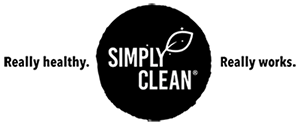Mould is a health hazard in the home.
It can cause respiratory problems for the young, elderly and sick, and trigger asthma attacks and worsen symptoms.
According to the National Asthma Council Australia, 50% of people living in mouldy homes have ongoing upper respiratory symptoms that resemble hay fever.
Can I use bleach – it’s cheap and available everywhere?
Chlorine bleach is the traditional solution for tackling mould in the home, but its effectiveness is limited and when asking "is bleach safe", you'll see its problems are numerous.
Pros:
Bleaches to white
On the plus side bleach literally “bleaches” your black mould to white, making it invisible and hiding that unsightliness.
Biodegrades
Weak bleach biodegrades happily to salt and water, so it’s pretty eco-friendly.
Cons:
Bleach isn’t a very effective mould killer
Bleach tackles mould on the surface and is not good at penetrating the mould to reach the hidden spores behind. So, the result may look good to start but it won’t be long before those lingering living spores begin to flourish and the mould appears once again.
Bleach is irritating and unhealthy for many
Chlorine fumes can irritate the nose and throat, and being around bleach seriously affects people with chronic health issues such as asthma and chronic fatigue.
Bleach is corrosive
Over time bleach will corrode taps and any metal fittings in your home. Less obviously bleach also eats away at your grout, making the surface more porous and susceptible to mould taking hold. It's a vicious cycle!
Bleach needs careful handling
Spills on fabrics mean ruined clothing or towels. And never try and mix bleach with any other cleaning product because bleach produces poisonous chlorine gas if it combines with anything acidic….and most bathroom cleaners are acidic!
How can I get rid of mould naturally, without toxic chemicals?
Hydrogen peroxide
Hydrogen peroxide is an oxygen-based bleach that’s super at tackling mould and performs even better when combined with surfactants (cleaning ingredients that break down the surface of stuff like dirt and mould). Whilst it’s a type of “bleach”, it discolours only mildly.
Our Simply No Mould combines a strong 5% solution of hydrogen peroxide and a blend of plant-based surfactants that help the hydrogen peroxide seep into the mould.
Pros:
Effective mould killing you can see at work
When Simply No Mould is sprayed onto mould it begins to fizz as it attacks and burns mould from the inside. The fizzing is an important part of helping Simply No Mould penetrate deep behind, and into, mould spores. Mould is destroyed quickly and thoroughly.
Biodegrades
Hydrogen peroxide breaks down to water and oxygen….literally a breath of fresh air!
The healthy alternative
Simply No Mould is free from irritants and there are no toxic fumes. So it’s safe to use even around our more vulnerable family members, including those with health conditions.
Safe around your home
It’s kind to your taps and your grout and safe from spill marks on colourfast fabrics.
Cons:
Simply No Mould is slower at concealing mould
Rest assured that your mould is already dead but the action of bleaching-to-white is much milder with hydrogen peroxide than with chlorine bleach. Hardened mould will need a few applications for the black colour to fade and disappear. This can be speeded up by using a white scourer and these are readily available from supermarkets for a few dollars.
Can I prevent mould?
Try these hacks
- Use a squeegee in your shower and send all that excess water straight down the drain after a shower.
- Ventilate - use exhaust fans and open windows where possible in the bathroom and kitchen, to remove condensation during showering and cooking.
- Use moisture absorbers in small rooms, and wardrobes. Calcium chloride crystals absorb excess moisture in the air and are cheap, and safe for the environment.

